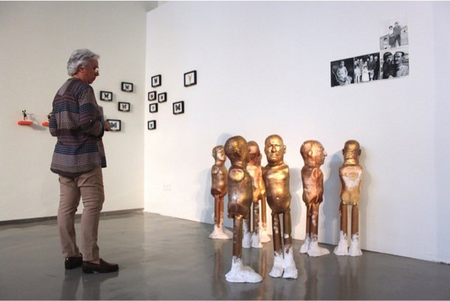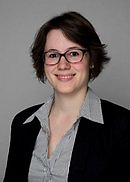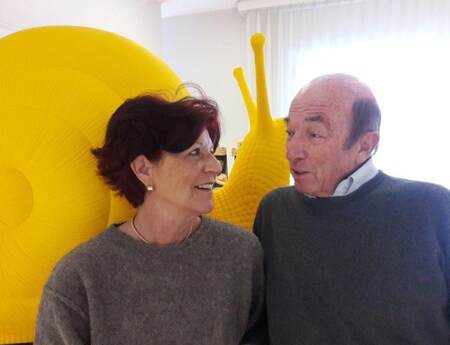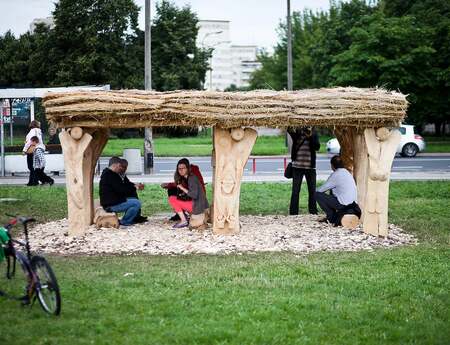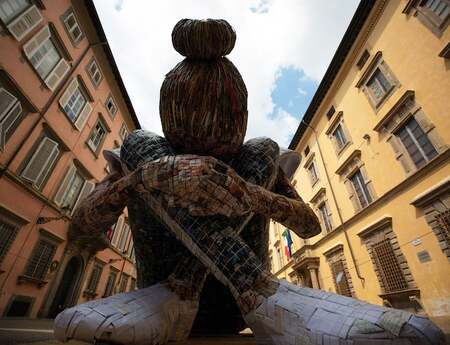SCULTO starts year two
Interview with Beatriz Carbonell Ferrer, the Artistic Director of SCULTO
In Logroño almost everything is allowed in terms of art, as long as it is three-dimensional. The borders of traditional art forms such as painting, photography and engraving seem to have shifted or even been removed completely. In the search for new artistic scenarios the art fair for contemporary sculpture, SCULTO, was created. This exceptional fair is taking place for the second time from May 30th to June 3rd and is bringing new life to the art scene in Logroño once again.
sculpture network spoke to Beatriz Carbonell Ferrer, the Artistic Director of SCULTO.
What differentiates SCULTO from other art fairs?
SCULTO is the first art fair in Spain that specialized in contemporary sculpture. These days there are a lot of art fairs, but the number that concentrate on sculpture is very small. With SCULTO we created a space that is exclusively dedicated to three-dimensional art and allows all possible forms of expression, materials, techniques, languages and concepts. In addition, all the artists who exhibit at SCULTO are still producing – this makes the fair very animated and contemporary.
What does a city like Logroño contribute to the fair?
Logroño is the capital of La Rioja, a region rich in landscape, agriculture, architecture, gastronomy and culture, all of which help the past merge with the present. It is a region that is enriched by the pilgrims from around the world walking along the Way of St. James every day. Above all, Logroño is famous for its wines with their mark of origin. All of these factors make Logroño a unique location which has much to offer visitors in addition to the art fair.
What has the reaction to the SCULTO project been in La Rioja and in the culture scene?
Really good. Thanks to the great dedication and our infectious passion the institutions have understood that SCULTO can contribute a lot to our community by complementing the current cultural offerings in order to reach the artistic sector at all levels. We receive enormous support from all sides – for example from the Ministry for Education, Culture and Sport, the State Secretary for Culture, the City Council of Logroño, from sculpture network and from many more institutes. We would like to thank everyone for the tremendous support they have given us.
Who is responsible for the organization of SCULTO?
The management team, which I belong to, consists of three people with differing occupational profiles. Business management, including all the administrative and legal processes, is done by Enrique Martínez Glera, while communication, public relations and interaction with institutions is directed by José María Esteban Ibáñez. I am the artistic director and am the link between the galleries and the curator team. I take care of the direct relationship with the gallery owners before, during and after their selection and maintain the contacts with the museums, curators, critics and collectors. In addition, we also are supported by an architect office, a graphic and design office, the media and several specialists who we turn to in certain situations, for example in order to develop different programs like SCULTOdeDÍA, SCULTOeduca and others.
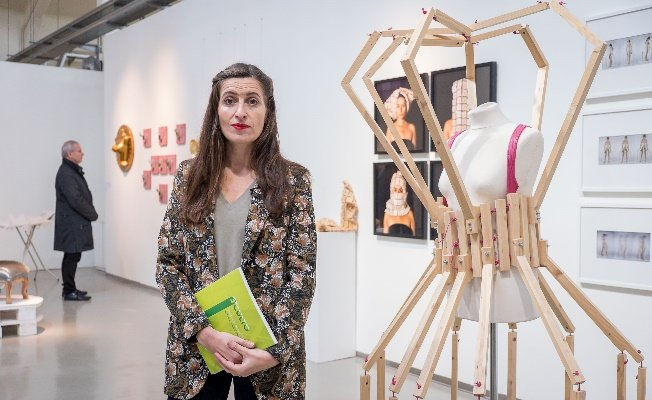
How did you select the works exhibited?
The management team defined the general style of SCULTO, its personality so to speak. We knew that we would need support from other specialists to complete our vision of contemporary art. Since we want to be a heterogeneous team where everyone can contribute their experience, we invite experts from the culture scene of different cities to form the curator team every year. That team evaluates the submissions from the galleries and artists and selects which entries will be presented in a public pre-announcement.
The call is directed to art galleries because we believe in this management model where the gallery owner is the specialist responsible for the promotion of the artist. He supports awareness and sales of the artist’s works.
Last year you only exhibited works from Spanish artists. What’s going to happen at SCULTO 2018?
From the very beginning we wanted SCULTO to become an international fair. But we also thought that it would make more sense to begin with a national call. Spain was a reference point in modern sculpture – particularly in the north – and contributes a great deal to international contemporary art even now. We wanted to bring these creators together in one room and break through the standard art fair exhibition format. For this reason SCULTO will again be held in the second floor of the San Blas Market, also known as the Plaza de Abastos de Logroño, located in the heart of the city. The works will be distributed in two large halls which are connected by to wide corridors in such a manner that no work is visually impacted by another. Last year SCULTO brought together 16 galleries, 40 artists and more than 200 sculptures. This year the number of galleries will be about the same, however this time the Spanish galleries can present artists of any nationality. Furthermore, the curator team invited more foreign galleries to participate. This is the beginning of a public, open and international call for next time.
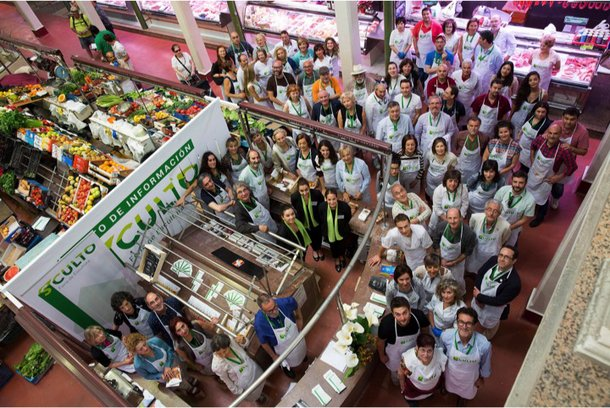
In addition to organizing SCULTO you also work with art and are active in many areas. For example, you are also the coordinator for sculpture network responsible for the northern region of Spain. Why did you decide to take on this role?
I learned about sculpture network through a friend while I was working as a sculptor in my studio. At that time I lived in Llíria, near Valencia. I was surprised that they focused on three-dimensional art and I was enthusiastic from the very beginning. My first real contact was in 2011 at start, the international festival for contemporary sculpture, which, at that time, was known as the new year’s brunch. I enjoyed the experience and realized that it gave me the opportunity to meet other artists and, more importantly, to discover what was going on in the sculpture scene throughout Europe. I started participating in sculpture network events, like the dialogues, the trips and the forums. As my interest in the group grew, the benefits of my membership also increased and I profited as an artist. Then, in 2013 I moved to Logroño. Everything was new and I had to make connections in the culture scene here. Eventually, they asked if I would like to report about the events related to three-dimensional art taking place here. I was happy to accept. That way I could share everything I discovered with the public and sculpture network gave me the means to present this information so that it would reach other institutes and groups.
On your personal art website you published the sentence “Being an artist is to believe in life”. What does that mean for you?
This sentence has accompanied me on my path since the beginning. I ran across it in 1995 in a Henry Moore catalog. It originates from the historian Franco Russoli and I’ve thought about it for a long time. This sentence presents many questions about the role of the artist. And over the course of time I have found some answers. Being an artist means being free in thought and work. Each one of us is distinct and we all experience the same things in very different manners and ways. In my works I can express my experiences in relation to society in my own language, thus making my art different and unique. Some of these works have already been awarded various prizes at the national level. Then I had the opportunity to travel to all five continents and to create large figures which can be viewed in sculpture parks and public spaces around the world. Underway I was able to collect many experiences with artists, managers, museum directors and, in general, with very different and interesting people. This all has helped me to be able to manage projects like SCULTO, where I learn a little bit more about art every day.
What project are you dreaming of now?
A few years ago SCULTO was a dream; today it is a very large and long-term project. We have barely started the first stage, but I feel as if part of this dream has already come true.
Autorin: Tabea Baumgartner

Tabea Baumgartner was responsible for the
organization of sculpture network start’18,
Since then she has developed an ever growing
passion for three-dimensional art
